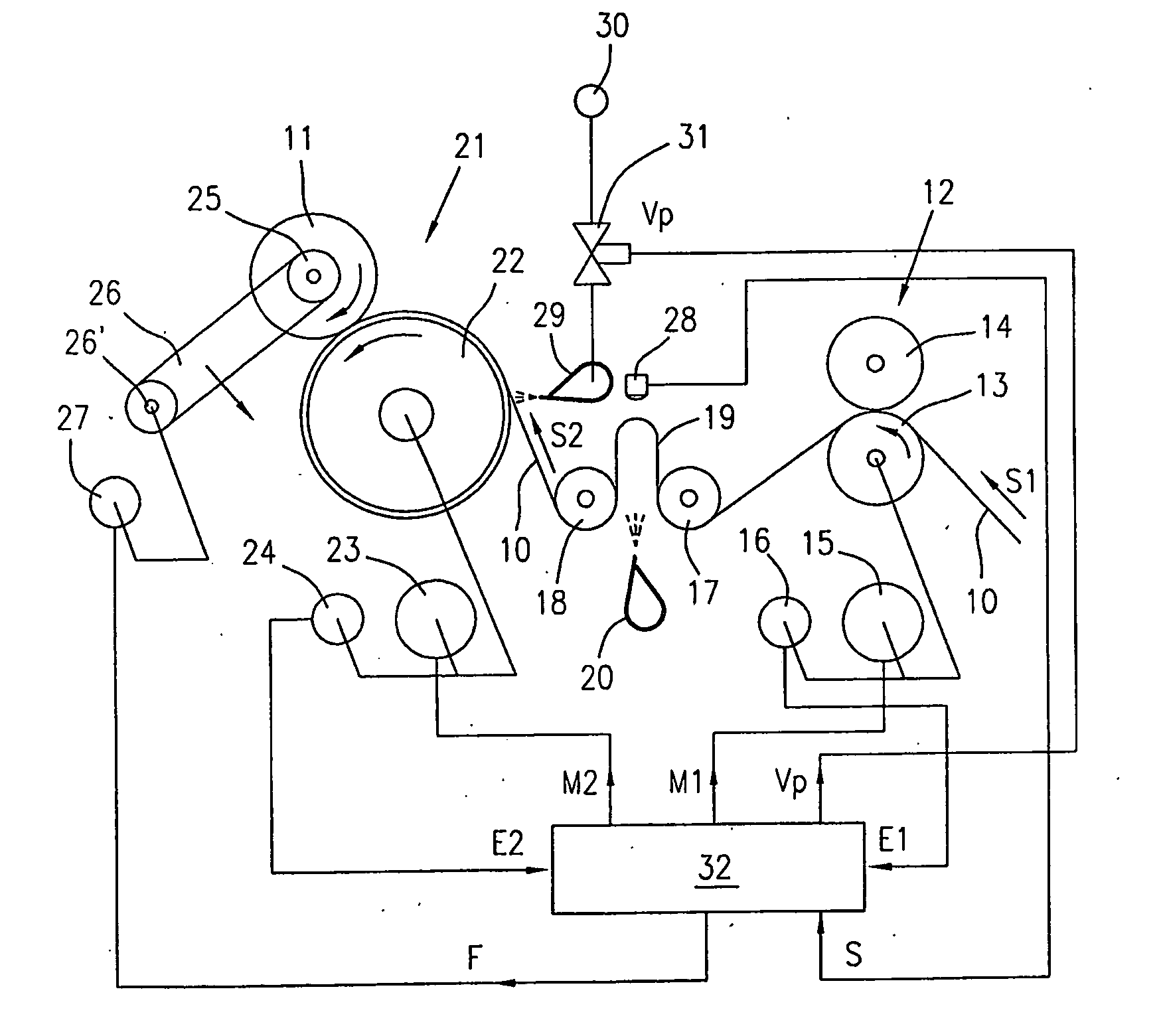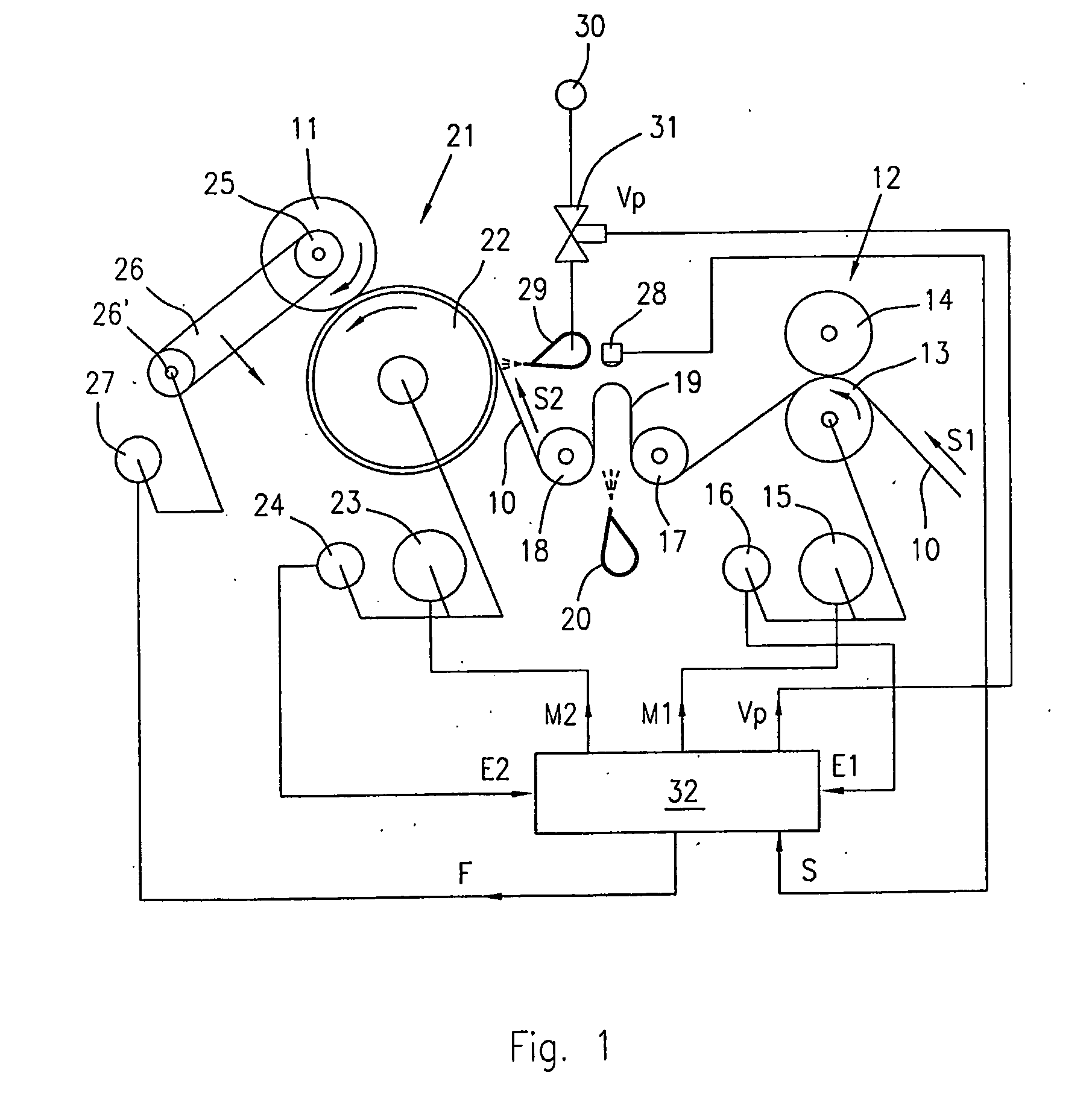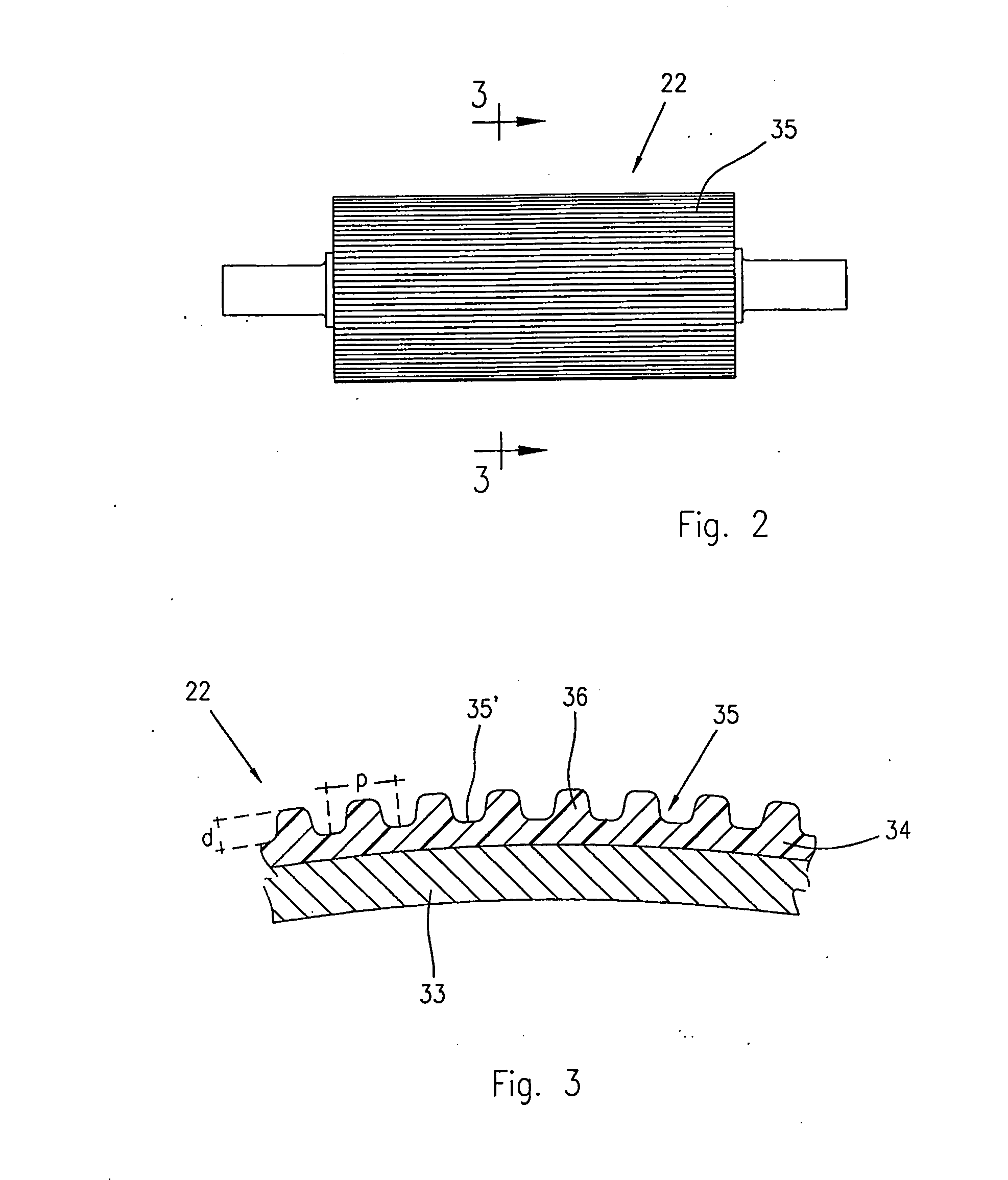Method and Apparatus For Winding up Coreless and Soft-Core Rolls of Film Materials
a technology of coreless and soft cores, applied in the direction of filament handling, thin material handling, web handling, etc., can solve the problems of irregular distribution of internal stresses, difficult to properly unwind the stretched film from a roll, and difficulty in winding coreless rolls or winding up the film on a soft tubular core. the effect of winding and unwinding the same film
- Summary
- Abstract
- Description
- Claims
- Application Information
AI Technical Summary
Benefits of technology
Problems solved by technology
Method used
Image
Examples
first embodiment
[0044]With reference to the figures from 1 to 4, a description is given of the apparatus and of the method for winding up coreless or soft-core rolls of film material, according to the invention.
[0045]As shown in FIG. 1, reference number 10 indicates a film of plastic, paper or other material, which is unwound from a roll, not shown, to be embossed and rolled up or wound onto a spindle 25, to form a coreless or soft-core roll 11.
[0046]The film 10, which can be of any type, for example unrolled from large-sized rolls, or directly from a production line, is made to advance along an embossing path at a first feeding speed S1 by means of a feeding device 12 comprising a drawing roller 13 and a pressure roller 14.
[0047]The drawing roller 13 is operatively connected to a first electric motor 15 provided with a first signal generator 16, consisting for example of an incremental encoder.
[0048]Subsequently to the first drawing unit 12, the film 10 is deviated by two idle guide rollers 17 and...
second embodiment
[0074]FIG. 5 of the drawings shows the apparatus, which differs from the previous one in respect to the system for forming the loop 19, and for maintaining the film 10 in an unstressed condition; therefore in FIG. 5 the same reference numbers have been used to indicate parts similar or equivalent to those of FIG. 1.
[0075]The embodiment of FIG. 5 differs from that of FIG. 1 in that the loop 19 is now directed with the bottom facing downwards, and is formed immediately downstream of the feeding device 12, between the latter and the first guide roller 17; moreover, the same nozzle 20 also is now facing downwards, while the sensor 28 has been positioned beneath the loop 19.
[0076]The apparatus of FIG. 5 operates exactly in the same way as the apparatus of FIG. 1.
third embodiment
[0077]A third embodiment is shown in FIGS. 6 and 7 of the drawings, in which the same reference numbers of the previous figures have been used for corresponding parts.
[0078]The embodiment of FIGS. 6 and 7 differs from the embodiments of FIGS. 1 and 5 in that the loop 19, downstream the feeding device, is provided by a pneumatically actuate devices 43 comprising a movable and adjustably supports idle roller 45.
[0079]As shown, the idle roller 45 is supported by an arm 46, which may pivot around an axis 47 coaxial to the shaft of the roll 13.
[0080]The pivotal movement of the arm 46 is adjustably performed by an actuator, for example by an air pressure actuated cylinder 48 hinged to the arm 46 and connected to an air pressure source 50 by a control valve 49 controlled by the outlet Vs of the control unit 33.
[0081]Position sensing means for the idle roller 45, such as linen encoder 51 are provided to control the position and / or the depth of the loop 16 as per previous cases.
[0082]An addi...
PUM
| Property | Measurement | Unit |
|---|---|---|
| thickness | aaaaa | aaaaa |
| depth | aaaaa | aaaaa |
| feeding speed | aaaaa | aaaaa |
Abstract
Description
Claims
Application Information
 Login to View More
Login to View More - R&D
- Intellectual Property
- Life Sciences
- Materials
- Tech Scout
- Unparalleled Data Quality
- Higher Quality Content
- 60% Fewer Hallucinations
Browse by: Latest US Patents, China's latest patents, Technical Efficacy Thesaurus, Application Domain, Technology Topic, Popular Technical Reports.
© 2025 PatSnap. All rights reserved.Legal|Privacy policy|Modern Slavery Act Transparency Statement|Sitemap|About US| Contact US: help@patsnap.com



